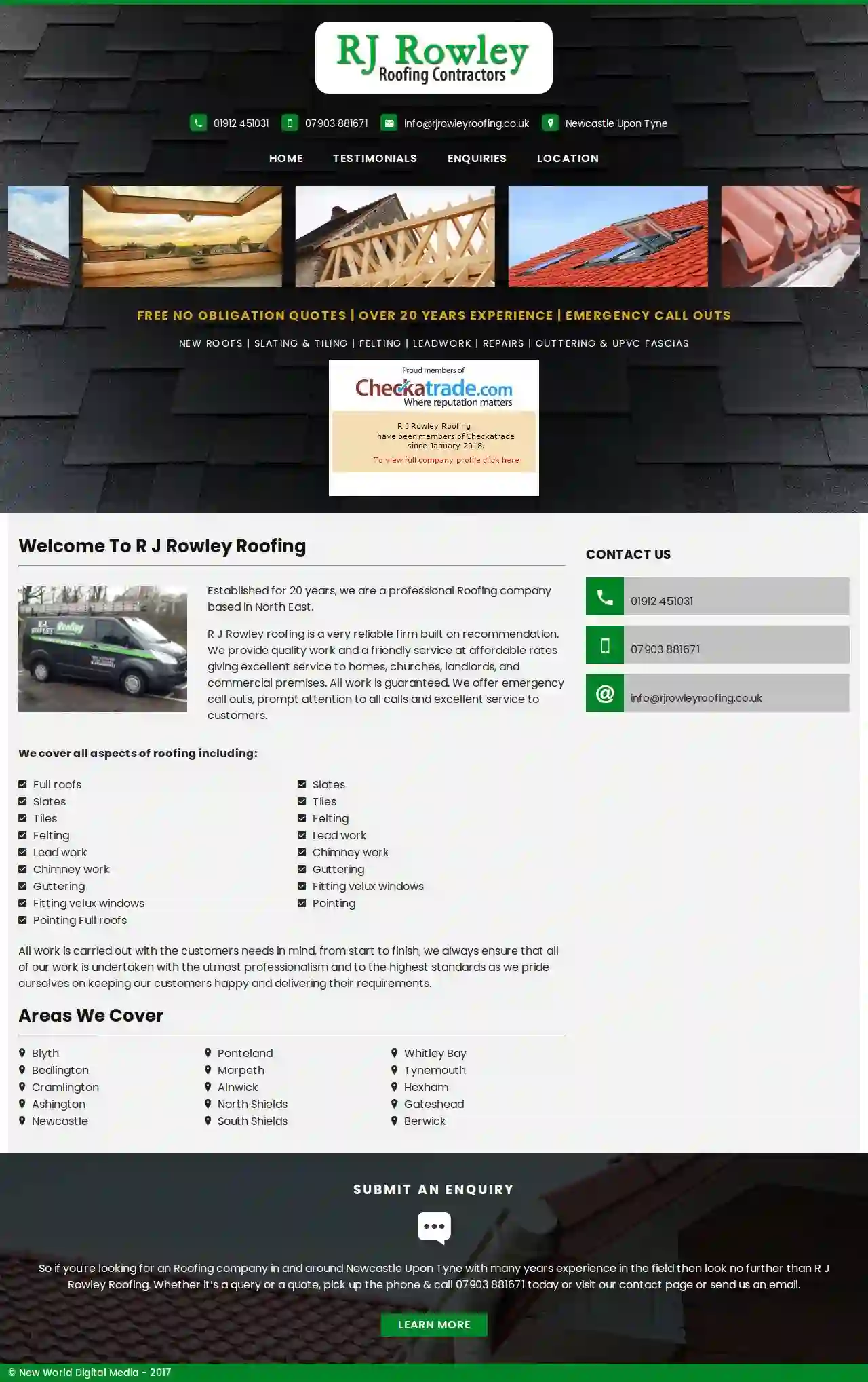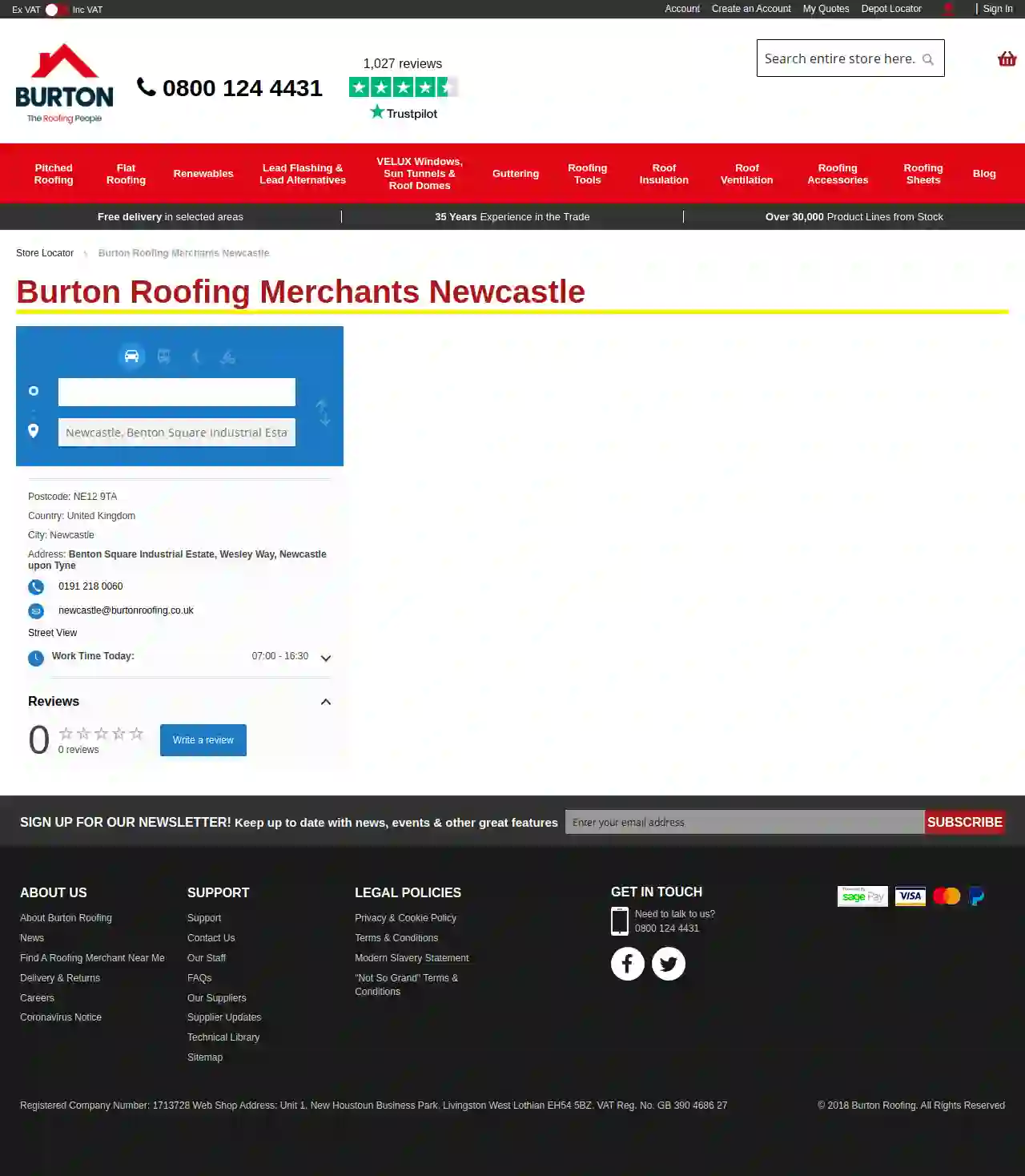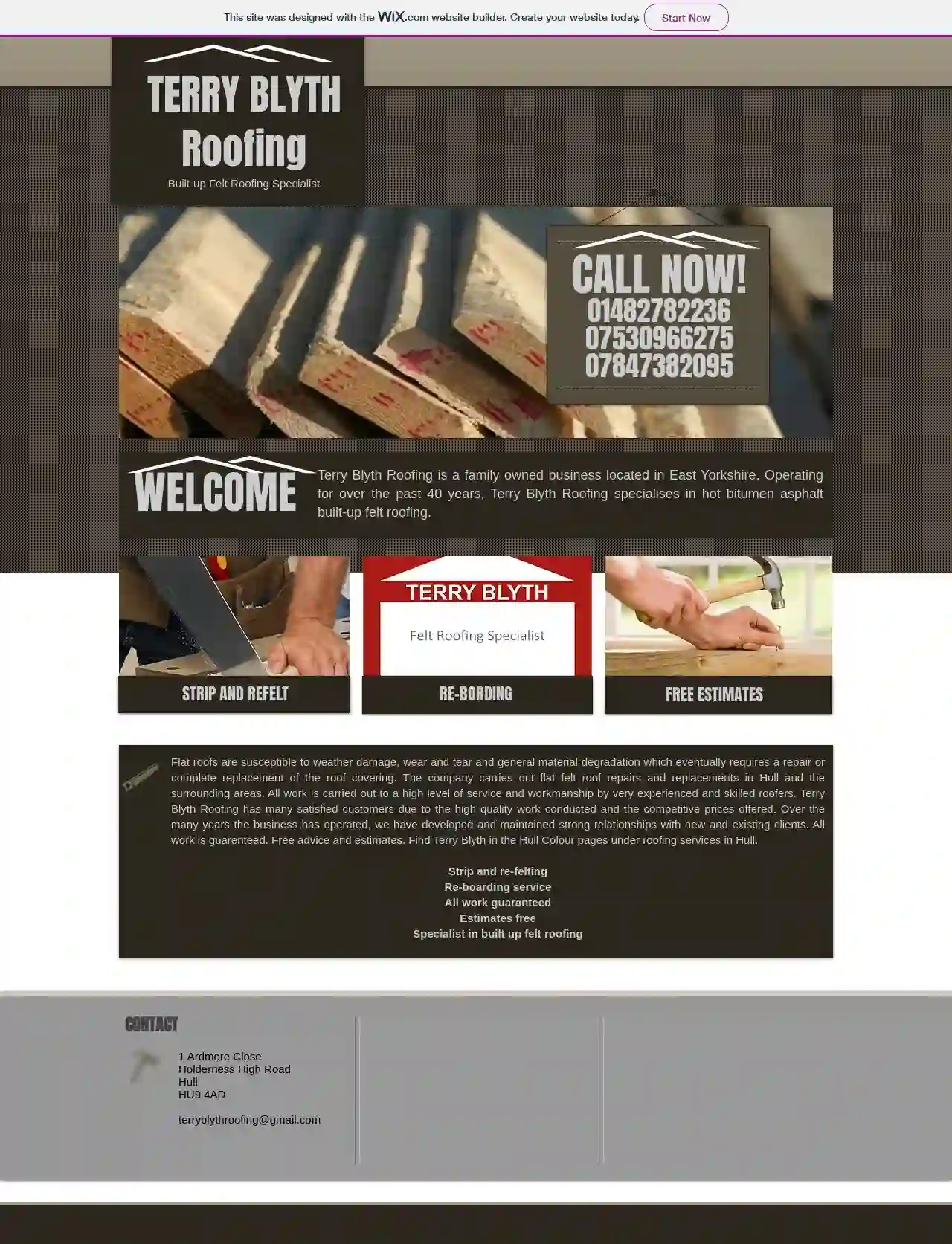Roofing Companies Newburn
Find Roofing Contractor in Newburn
Get 3 FREE Roofing Contractor quotes for your project today! Compare profiles, reviews, accreditations, portfolio, etc... and choose the best deal.

Enhance roofing and building
4.627 reviewsSunderland, GB- Services
- Why Us?
- Gallery
Get Quote
R J Rowley Roofing LTD
4.364 reviews19 Belle Grove West, Newcastle Upon Tyne, NE2 4LT, GBEstablished for 20 years, we are a professional Roofing company based in North East. R J Rowley roofing is a very reliable firm built on recommendation. We provide quality work and a friendly service at affordable rates giving excellent service to homes, churches, landlords, and commercial premises. All work is guaranteed. We offer emergency call outs, prompt attention to all calls and excellent service to customers. We cover all aspects of roofing including: Full roofs Slates Tiles Felting Lead work Chimney work Guttering Fitting velux windows Pointing All work is carried out with the customers needs in mind, from start to finish, we always ensure that all of our work is undertaken with the utmost professionalism and to the highest standards as we pride ourselves on keeping our customers happy and delivering their requirements. Areas We Cover Blyth Bedlington Cramlington Ashington Newcastle Ponteland Morpeth Alnwick North Shields South Shields Whitley Bay Tynemouth Hexham Gateshead Berwick
- Services
- Why Us?
- Our Team
- Testimonials
- Gallery
Get Quote
HB Joinery & Construction Ltd
Unit 14 Helmsman House, Norham Road, North Shields, NE29 8RZ, GBHB Joinery & Construction Ltd provide complete building solutions for industrial, commercial and domestic customers across the North East. With over 30 years expertise we have a team of specialists that can call out and assist with your project – regardless of the size, business or domestic. Our Services Include Garden Rooms Garden rooms and summerhouses add value as an additional living space, extending the comfort of your home into the outdoor space of your garden. Loft Conversions Adding additional space can be a way to add real value to your property and gain additional space – whether it’s a bedroom, office, playroom plus the additional storage with clever use of space. Extensions Whether you are looking at a full house renovation or house extension, at HB Joinery & Construction Ltd we are specialists in building work. New roofing Our team of fully qualified roofers are here to help! With over 30 years in the industry, we know what matters to you; competitive pricing, quality workmanship and a trusted team. Doors HB Joinery & Construction Ltd supply and fit wooden door frames and doors, from standard front doors to bespoke designs. Commercial Contracts We have a team of specialist contractors available to work on Commercial projects; New Housing Developments, Hotels, Shops, Retail Outlets, Hotels, Schools, Hospitals & All Municipal Buildings ALL OF OUR PROJECTS HAVE A CLEAR AND EASY PROCESS... Quote, Survey & Plans Once we have finalised the proposal we will carry out a survey and provide architectural plans. Scaffolding & Delivery of Materials Prior to starting scaffolding is erected the materials and steels will be delivered. Beams In, Joists & Boarding Beams are installed, floor joists inserted and floor boarding done. Insulation, Velux's & or Dormers Insulation is installed, Velux windows fitted and dormers constructed. Staircase & Fitting New staircase is installed, internal partitions fitted, first fix electrics & plumbing. Plasterboarding, Plastering & Doors Plasterboard is fitted, all rooms and staircase plastered, new doors hung. Second Fix Electrics, Plumbing & Joinery New bathroom suite is fitted, sockets and lights fitted, all skirting boards and architraves installed. Contact Us for a no-obligation quotation 100% Satisfaction Guaranteed. building solutions for industrial, commercial and domestic customers across Yorkshire and the North West
- Services
- Why Us?
- Gallery
Get Quote
DB Roofing and Building Maintenance
The Business Centre, Unit 1, Worthing, BN18 9AA, GBD.B. Roofing & Building Maintenance is a family-run business with over 25 years of experience in the roofing and building maintenance industry. We pride ourselves on providing a high-quality, reliable service to both domestic and commercial clients. Our team of skilled and experienced tradesmen are fully qualified and insured, and we are committed to providing a professional and friendly service at all times. We offer a wide range of services, including roof repairs, roof replacements, guttering, fascias and soffits, and building maintenance. We are based in West Sussex and cover the surrounding areas. We understand that your home or business is your most valuable asset, and we are dedicated to protecting it. We use only the highest quality materials and workmanship, and we are always happy to provide a free, no-obligation quote.
- Services
- Why Us?
Get Quote
Burton Roofing Merchants - Newcastle Upon Tyne
4.669 reviewsBenton Square Industrial Estate, Wesley Way, Newcastle upon Tyne, Newcastle, NE12 9TA, GBBurton Roofing is a leading supplier of roofing materials in the UK, with over 35 years of experience in the trade. We offer a wide range of products from over 30,000 lines, all available from stock. Our team of fully trained staff are on hand to provide expert advice and support, whether you're a professional contractor or a DIY enthusiast. We pride ourselves on our commitment to customer service and our competitive prices. With a network of branches across the UK, we're sure to have a depot near you.
- Services
- Why Us?
- Accreditations
- Gallery
Get Quote
Roof Trust
4.97 reviewsSouth Shields, NE33 1AA, GBRooftrust LTD is a well established and well known Roofing Company. At Rooftrust LTD, our aim is to provide quality New Roofs in South Shields as well as Solar PV, GRP Roofs and Gutter Cleaning. We are situated in South Shields, we can provide quality roofing services across South Shields and many of it’s surrounding areas. We are experienced roofers who can take on any task in a reasonable timescale. We are considered by many as the go-to roofing company for roof repairs in Newcastle. Our customer satisfaction is built up on trust, hard work and dedication which makes us one of the best new roof providers in Newcastle. For a trusted roofer in South Shields look no further and call us on: 07538 081 134. Rooftrust LTD specialise in the following: Roof Repairs, New Roofs, Roofing Services, Solar Panels, Solar PV, Flat Roofs, Gutter Cleaning, Rubber Roofing, Gutter Repairs, GRP Roofs. If you have any questions please feel free to contact Rooftrust LTD via telephone – 07538 081 134. You can also contact us on our Facebook Page.
- Services
- Why Us?
- Gallery
Get Quote
Trevor Smeaton Roofing Services
413 reviews3 Whittingham Road, Tynemouth, NE30 3TB, GBSmeaton Roofing is a family run roofing business operating in and around Whitley Bay. The company was started by Arthur Smeaton 45 years ago and is now run by his son Trevor Smeaton who has over 25 years experience in the roofing business. We are roofing repairs specialists carrying out most of our work in Tyne and Wear and surrounding areas including; Whitley Bay, Tynemouth, North Shields and Monkseaton.
- Services
- Why Us?
- Our Team
- Gallery
Get Quote
Whitley Bay Roofers
516 reviews123 Main Street, Whitley Bay, NE25 0AA, GBWhitley Bay Roofers is a professional roofing company serving the Whitley Bay and surrounding areas. With over 20 years of experience, they offer a comprehensive range of roofing services, from emergency call-outs to planned roof maintenance. They pride themselves on delivering high-quality workmanship and exceptional customer service. Their team of experienced and trained roofers is dedicated to providing reliable, trustworthy, and respected service. Whitley Bay Roofers is committed to ensuring 100% customer satisfaction and guarantees all their complete roof renewals.
- Services
- Why Us?
- Our Team
- Testimonials
- Gallery
Get Quote
MBL Roofing
52 reviewsGBMBL Roofing is a reliable roofing company based in the North East of England. We offer a wide range of roofing services, including full new roofs, re-roofing, refurbishment, flat roofs, roof repairs, lead flashings and gutters, fascias, soffits and gutters, timber and PVC boards, PVC cleaning, exterior painting, repointing, dry verge systems, and conservatory warm roof replacement. We pride ourselves on providing a professional, friendly, and competitively priced service. We work closely with our customers to meet and exceed their expectations. We cover most of the North East, including County Durham, Gateshead, Washington, Sunderland, North Tyneside, South Tyneside, Middlesborough & Northumberland.
- Services
- Why Us?
- Gallery
Get Quote
Terry Blyth Roofing
Holderness High Road, 1 Ardmore Close, Hull, HU9 4AD, GBTerry Blyth Roofing is a family owned business located in East Yorkshire. Operating for over the past 40 years, Terry Blyth Roofing specialises in hot bitumen asphalt built-up felt roofing. Flat roofs are susceptible to weather damage, wear and tear and general material degradation which eventually requires a repair or complete replacement of the roof covering. The company carries out flat felt roof repairs and replacements in Hull and the surrounding areas. All work is carried out to a high level of service and workmanship by very experienced and skilled roofers. Terry Blyth Roofing has many satisfied customers due to the high quality work conducted and the competitive prices offered. Over the many years the business has operated, we have developed and maintained strong relationships with new and existing clients. All work is guaranteed. Free advice and estimates. Find Terry Blyth in the Hull Colour pages under roofing services in Hull.
- Services
- Why Us?
- Gallery
Get Quote
Over 12,314+ Roofers in our network
Our roofing contractors operate in Newburn and surroundings!
Roofyng.co.uk has curated and vetted Top Roofers in Newburn. Find the most trustworthy business today.
Frequently Asked Questions About Roofing Companies
- Asphalt Shingles: Popular, affordable, available in various styles (3-tab, architectural, etc.)
- Metal Roofing: Durable, long-lasting, energy-efficient, available in panels, shingles, or tiles.
- Tile Roofing: Clay, concrete, or slate; known for longevity, durability, and aesthetic appeal.
- Flat Roofing: EPDM rubber, TPO, PVC, modified bitumen, or built-up roofing (BUR).
- Slate: Natural stone, extremely durable, expensive, requires expert installation.
- Wood Shakes or Shingles: Natural wood, aesthetically pleasing, requires regular maintenance.
- Home Improvement Loans: Offered by banks or credit unions.
- Home Equity Loans or Lines of Credit: Use your home's equity as collateral.
- Government Programs: Check for energy efficiency rebates or grants.
- Contractor Financing: Some roofing companies offer financing plans.
What is a roof valley, and why is it important?
What are the different types of roofing materials?
How can I get financing for a new roof?
What should I do with my old roof after replacement?
What is a roof valley, and why is it important?
What are the different types of roofing materials?
- Asphalt Shingles: Popular, affordable, available in various styles (3-tab, architectural, etc.)
- Metal Roofing: Durable, long-lasting, energy-efficient, available in panels, shingles, or tiles.
- Tile Roofing: Clay, concrete, or slate; known for longevity, durability, and aesthetic appeal.
- Flat Roofing: EPDM rubber, TPO, PVC, modified bitumen, or built-up roofing (BUR).
- Slate: Natural stone, extremely durable, expensive, requires expert installation.
- Wood Shakes or Shingles: Natural wood, aesthetically pleasing, requires regular maintenance.
How can I get financing for a new roof?
- Home Improvement Loans: Offered by banks or credit unions.
- Home Equity Loans or Lines of Credit: Use your home's equity as collateral.
- Government Programs: Check for energy efficiency rebates or grants.
- Contractor Financing: Some roofing companies offer financing plans.